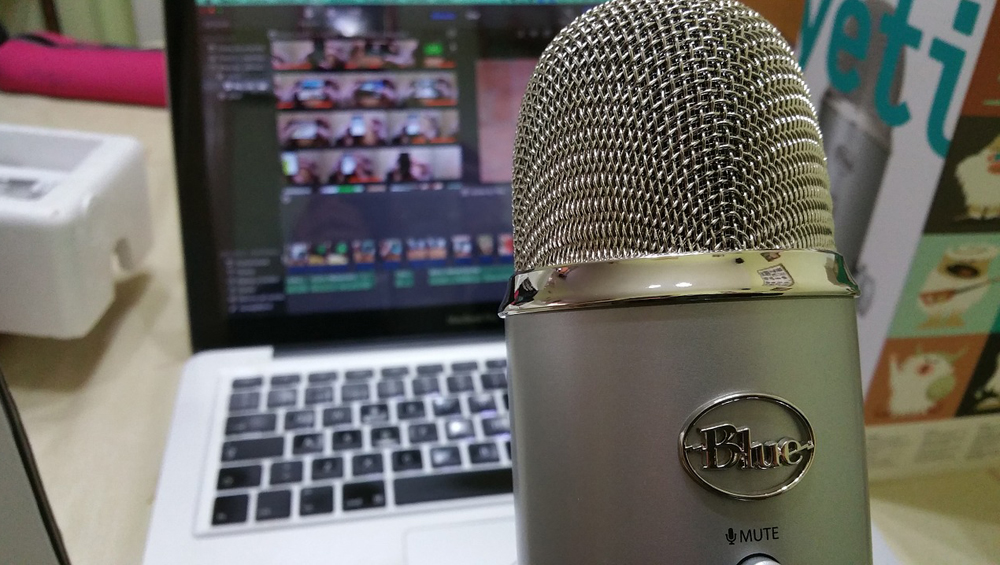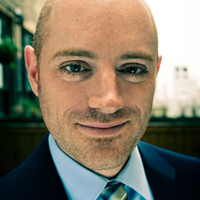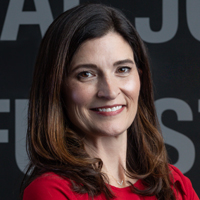
TVN Focus | Stations See Audience, Rev Potential In Podcasts

When NBCUniversal drew up plans for its just-opened, $125 million Boston Media Center, the company included a state-of-the-art studio devoted to podcast production. It was one of many recent signs that NBCU and a growing number of media companies — including Fox, E.W. Scripps, Tegna, Bonneville International and more — are now devoting resources to podcasting.
And why wouldn’t they? Popular podcasts these days can make $10 million annually, or more, with overhead as little as $5,000 or less. Advertisers in the U.S. spent $479 million dollars on podcast spots in 2018, a year-over-year increase of 53%. According to Mark, by 2021 that figure will top $1 billion, and as recently as December 2019, two TV broadcast-first companies, ESPN and NBC News, appeared in podcasting’s top 10 audience-size rankings.
It’s taken a while, but after much exploratory trial-and-error the past decade, some broadcasters are beginning to enjoy some significant financial returns from podcasting, through a variety of means and approaches to content production and promotion.
A Revenue Driver At KSL

Bonneville Salt Lake’s Jon Accarrino
“We’ve experimented with several ways to monetize our podcasts,” says Jon Accarrino, executive director of business development at Bonneville Salt Lake, the operation that includes NBC affiliate KSL and its 65 podcasts. “There’s definitely a high six-figure revenue stream attached to our podcasting program.”
Half of KSL’s podcasts are on-air content made available through podcasts, while the other half are digital original or podcast-first content that may also air on KSL-AM and KSL-FM.
The group has invested in additional manpower to generate podcast-first content, while the “on-air product is handled by producers who write the episode descriptions and upload the audio by the end of their shifts,” says Sheryl Worsely, director of audience development. “Many of our on-air shows are trimmed to the best content, and terrestrial commercial breaks are removed, making the content available to be sold again digitally.”
Accarrino reports that ad blocks for the station’s localized podcasts, including the frequently updated traffic and weather podcasts, “have been sold out since they debuted.”
“Although they have a very limited shelf life, our local news podcasts have been extremely popular with regional banks and local services companies,” he says. “We just clip the content and push it into a podcast RSS feed with a sponsor pre-roll. It’s a simple idea that offers benefits to both the audience and advertiser.”
Some other KSL podcasts reach a national audience, and Accarrino points to “geotargeted ad insertion, sponsored content and podcast sponsorships” as the three of KSL’s most successful marketing strategies to date.
The company has deployed both local and national sales teams — and sometimes hires third-party sales representatives as well — to find advertisers. They’ve also put much consideration into how their ads are delivered.
“We don’t hardcode or ‘burn in’ our podcast ads,” Accarrino says. “All ads are dynamically inserted into a podcast episode at the moment of download based on your current geolocation.”
A listener in Hoboken, N.J., will hear a different and, ideally, more relevant ad than someone in Salt Lake City, Utah, for example.
“Local ads take priority, then national campaigns and finally programmatic,” Accarrino says. “That’s our priority order. This way we are able to maximize every available ad impression today as well as for years to come.”
Another one of the ways KSL has been able to arrive at that “high six-figure revenue stream” mark is by selling their podcast ads by CPM.
“You can easily estimate your potential revenue by how many ad impressions you are generating with your podcast efforts,” Accarrino says.
KSL typically charges a $30 CPM for a single, 30-second pre-roll ad, which amounts to $3,000 for every 100,000 podcast downloads. (Variety reports that CPM rates for podcasts across the board range between about $10 and $50.)
“National advertisers will buy in bulk and get discounted rates,” Accarrino says. “And if that ad unit isn’t filled by local or national ads, then a programmatic ad will get served to the listener.”
Programmatic rates vary but Accarrinno says they can run between $4 and $20, and KSL shows include ad markers for pre-roll, mid-roll and post-roll ad insertion. In some cases, the team will “bake in an ad for a much higher CPM, but our preference is dynamic ad insertion,” Worsely says. “We have also explored branded podcasts with some success,” she adds.
Tegna’s Vault
Investments in podcasting have also manifested in the form of production company subdivisions, such as Tegna’s Vault Studios, founded in March 2019. To date, Vault has offered seven true-crime series, repackaging gripping news stories from local markets into podcasts fit for national audiences.
When Vault launched, however, the shows were completely devoid of advertisers. Adam Ostrow, Tegna’s chief digital officer, indicated at the time, the company was content with building an audience first before reaching out to advertisers.
But the unorthodox approach doesn’t mean Tegna is willing to take a long-term net loss from podcasting.
“I don’t think we’d be doing it if we didn’t see an opportunity to make it a meaningful business,” Ostrow says. “We’ve started to run ads inside our shows from a variety of sponsors, and will have more to announce soon.”
In addition to hopping on the true-crime podcasting bandwagon — which went into hyperdrive in October 2014 with the arrival of Serial, a program widely credited with projecting the medium into the mainstream — Ostrow says Tegna’s stations are also “experimenting” with localized podcasts. They’ll cover politics, sports and other topics, but, to Tegna, podcasting has other prospective revenue-producing tentacles as well.
“Podcasting is just the first piece of it for us,” Ostrow says. “In true crime more broadly, we also see a big opportunity to take our content, our archives and our podcasts, frankly, and adapt them to video programming, whether it’s for streaming services or cable, where there’s tens of billions of dollars now being spent per year on original programming.”
Scripps’ Major Podcast Play
E.W. Scripps has historically been the media company perhaps most bullish on podcasting. Shortly after the Serial splash, the company purchased the prominent podcast platforms Midroll Media and Stitcher, in 2015 and 2016, respectively. Scripps later consolidated the two under a Stitcher-branded umbrella.
“We see podcasting as one of the most important platforms for the future of journalism and storytelling,” wrote Adam P. Smyson, the company’s president and CEO, in Scripps’ 2017 financial report. “Last year, Midroll formed partnerships with the NFL, Oprah Winfrey and Marvel Comics — three major national brands drawn to podcasting because of its growing, affluent audience. Blue chip brand advertisers are following suit.”
The following year, Scripps reported to shareholders that its national media revenues had gone up $193 million, with nearly $45 million of it “primarily driven by increased revenues from Stitcher and Newsy,” the company’s digital video news platform. Stitcher’s revenue funnels in from advertising, as well as enrollment fees for Stitcher Premium, the group’s subscription service that provides exclusive content for members.
“Other revenue sources include podcast agency services,” the report said. “Stitcher, through its Midroll Media advertising network, earns revenue by acting as a sales and marketing representative to connect advertisers and specific podcasts based on the advertiser’s desired target audience.”
Further fattening their presence in podcasting, Scripps acquired Triton, another digital audio technology company, in 2018.

Scripps’ Laura Tomlin
“We are optimistic about the future of digital audio,” says Laura Tomlin, EVP of national media at Scripps. “As consumers increasingly move to consuming content on mobile platforms and through other emerging technologies like smart speakers, we believe our portfolio of digital audio companies will continue to lead the way on delivering on consumer needs.”
Tomlin says advertisers are following suit. “Major brands are increasingly understanding the value of reaching consumers in this medium, and the intimate relationship that comes from the listening experience,” she says.
Podcasting’s Challenges
But for many, revenue from podcasting likely won’t arrive as quickly as it takes to turn on a microphone and mixing board. In March 2019, for example, an NBCU representative told Digiday that it had taken two years for its Oxygen Media-produced podcasting to be “on the precipice of becoming a real business” and attracting national advertisers.
One challenge across the podcast landscape is programming saturation, spurred by the accessibility of the medium’s technology. (One of the most popular podcastsers, Marc Maron, famously started his show out of his garage.) Some estimates put the number of podcasts in excess of 900,000.
“Discoverability is going to continue to be a challenge,” says John Morris, VP of streaming and on demand at WideOrbit, a platform that connects digital and linear content.
One solution for broadcasters — outside of focusing on “just creating really cool, unique content,” Morris says — is for them to leverage their on-air talent. NBC News has mastered this, as its slate of podcasts seems to feature some of its most recognizable faces from TV. Such an approach makes cross promotion of podcasts on any other platform seamless.
“When it does happen [at Scripps], it is often an organic crossover, where a podcast we are producing has local ties to one of our stations, for example,” Tomlin says.
To align with the launch of the Court TV network from Scripps’ Katz Networks, the company also launched a podcast for the network. Scripps has also produced Dr. Phil’s podcast and represents Oprah Winfrey’s podcasts for advertising.
“The reverse has also happened,” Tomlin adds. “Stitcher has run promotions for some of our TV programming — especially the properties with national reach — when it makes sense.”
Morris says tenacity will pay off for those broadcasters who stick to their podcast strategy.
“There’s real money flowing…. It’s where audiences are going,” he says.
A GM’s Perspective

WTTG-WDCA’s Patrick Paolini
“If you have the resources and you can figure it out, to me [podcasting is] a no-brainer,” says Patrick Paolini, SVP and GM of Fox Television Stations’ WTTG and WDCA, in Washington. “I think it has legs for sure.”
Over the past year and a half, Paolini has overseen production of several podcasts, including one he hosts, The Paolini Perspective, covering pop culture, politics and other topics. There’s also the Missing Pieces series, which so far has examined five different local cases of murder and disappeared people.
“We’ve totaled well over a million downloads at this point, which we’re real happy about,” Paolini says of the series.
The podcasts’ exposure has been a positive, but in Paolini’s eyes, the production work itself, on the part of reporters who still contribute to TV newscasts, has emerged as another.
“It has invigorated the entire newsroom,” Paolini says. “I’m not overstating that,”
Most of the TV reporters helping craft the true-crime podcasts covered the same stories on air back when they broke. (Paolini says their labor between the two media is split and being managed dutifully.)
Because there’s no time or space limit to a podcast production, the new outlets have given Paolini’s reporters the opportunity to more deeply dissect case evidence. Some reporters have even uncovered new facts, Paolini says, but all of them can now deliver a more in-depth, nuanced story, showing off their skills through a completely different conduit.
In addition to The Paolini Perspective, there are two more podcasts coming out of Fox’s D.C. stations, one that’s spiritual-centered and another about politics. All three get a new episode each week.
In addition to posting snippets of the podcasts on Facebook, YouTube and other social media, promotional efforts on behalf of the podcasts turn up regularly on WTTG as well. Paolini says the station runs bumpers, mentions the podcasts in the ticker and will have the shows’ reporters or even characters appear on the station’s morning show. These appearances are often timed with the day a new episode is released.
“It really lends itself to a lot of different ways to promote them, for sure,” Paolini says. He also appreciates the fact that podcasts are archived in a feed, readily available for people to find long after they’ve been produced.
“One of the other benefits is the reverse content back to linear,” Paolini says.
For example, when the podcast reporters have new information about a case worthy of presentation, or there’s a source who can offer a compelling interview, WTTG will run segments featuring them.
It’s new content building new content upon itself.
“I don’t think we necessarily anticipated that [outcome], but it’s been a great way to tie it all together,” Paolini says.
WTTG’s podcast growth has been achieved essentially through sheer will. The station’s front-loaded investment in the form has yet to pay real monetary dividends — at least up to this point.
“The revenue is starting to come, though,” Paolini says, “and I think it will only grow but, really, the content drove [our work] first, with the hopes to make some money.”
Fox is certainly putting company money where Paolini’s mouth is — literally.
Like NBCU’s Boston market, WTTG and WDCA are soon getting a new home. They will move to suburban Bethesda, Md., and will occupy more than 59,000 square feet of space.
The facility will also include a brand new podcast studio.
































Comments (0)